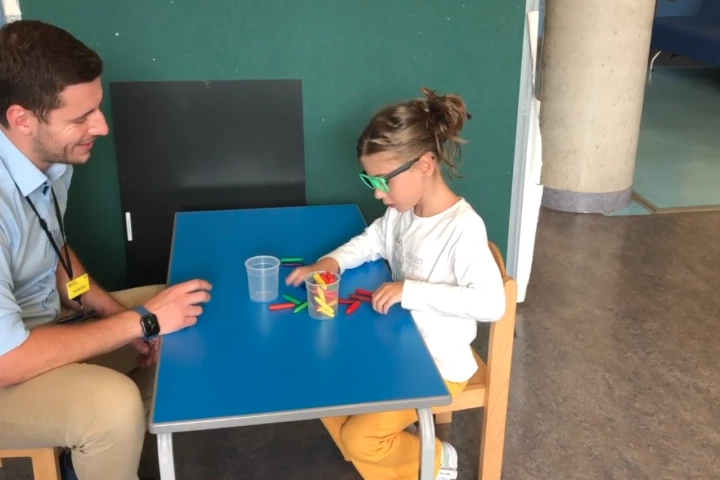Blind
-
An upcoming wearable device for the legally blind could help them navigate public and outdoor spaces independently, acting as 'glasses' that guide them through their surroundings. Maker .Lumen is accepting reservations now.
-
A tiny implant that beams images straight to the retina, bypassing a damaged cornea altogether, could give sight back to millions living with corneal blindness – no donor tissue required. Human trials may be underway in as little as two years.
-
A breakthrough treatment has allowed damaged retinal cells to regenerate themselves. The current research has been conducted on mice, but the pathways are the same in humans, which opens hope for a new way to treat certain kinds of blindness.
-
Scientists in the UK have successfully used gene therapy to restore some vision to legally blind children with an inherited retinal condition. All 11 children in the clinical trial saw improvements within weeks of a single surgical treatment.
-
A clever new set of glasses may offer new hope to people with macular degeneration. By copying the structure of a fly's eyes, the specs are claimed to "fill in" the missing section of the wearer's view of the world.
-
White canes are fine for helping blind users make their way down streets, but they can't tell those users what objects, signs or scenes are in front of them. That's exactly what the Seekr is designed to do, however, using a heapin' helping of AI.
-
The ratio of guide dogs to blind people in China is roughly one service pooch for every 40,000 people. Researchers are currently developing a six-legged, AI-enhanced robodog to close the gap and safely guide users to their destinations.
-
CRISPR gene-editing has improved the vision of patients with a form of blindness in a Phase 1/2 clinical trial. The results give new hope to patients with the condition, and show that CRISPR could be put to use in humans to treat a range of conditions.
-
There are many situations in which blind people don't necessarily have to see what they're holding, they just need it described to them. An experimental new wearable device, known as AiSee, is designed to do that very thing.
-
While there are already apps that guide blind users to a bus stop's GPS coordinates, those people may unknowingly end up standing too far away from the actual stop. A new app addresses that shortcoming, by letting the phone's camera in on the act.
-
While blind people are able to enter text into computers via braille keyboards, their options are more limited when it comes to using smartphones. The Fintin V1 is made to help, by compressing a full QWERTY keyboard into six multi-functional keys.
-
Table tennis is one of those sports that most people would likely assume is simply unplayable by the blind. An Australian student, however, is now using cameras and speakers to get unsighted individuals in on the ping pong action.
Load More











